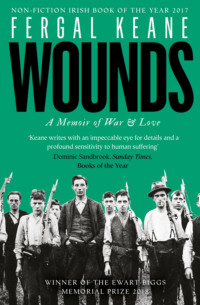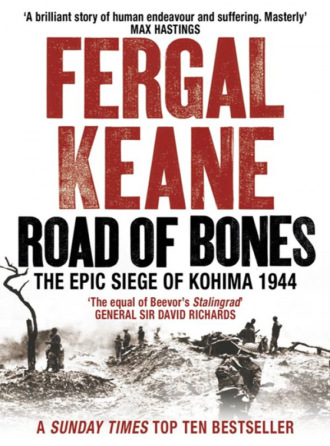
Полная версия
Road of Bones: The Siege of Kohima 1944 – The Epic Story of the Last Great Stand of Empire

ROAD OF BONES
THE SIEGE OF KOHIMA 1944
THE EPIC STORY OF THE LAST
GREAT STAND OF EMPIRE
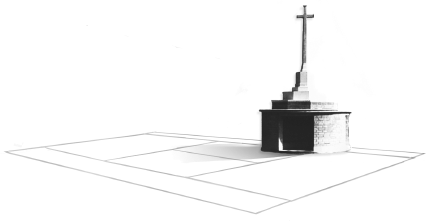
FERGAL KEANE

COPYRIGHT
William Collins
An imprint of HarperCollinsPublishers Ltd 1 London Bridge Street London SE1 9GF www.harpercollins.co.uk
First published in Great Britain by HarperPress in 2010
Copyright © Fergal Keane 2010
Fergal Keane asserts the moral right to
be identified as the author of this work
A catalogue record for this book
is available from the British Library
Maps by Hugh Bicheno
All rights reserved under International and Pan-American Copyright Conventions. By payment of the required fees, you have been granted the nonexclusive, nontransferable right to access and read the text of this ebook on screen. No part of this text may be reproduced, transmitted, downloaded, decompiled, reverse engineered, or stored in or introduced into any information storage and retrieval system, in any form or by any means, whether electronic or mechanical, now known or hereinafter invented, without the express written permission of HarperCollins e-books.
HarperCollins Publishers has made every reasonable effort to ensure that any picture content and written content in this ebook has been included or removed in accordance with the contractual and technological constraints in operation at the time of publication.
Source ISBN 9780007132409
Ebook Edition © JULY 2013 ISBN 9780007439867
Version 2018-12-05
DEDICATION
In memory of John Shipster, soldier.
CONTENTS
Cover
Title Page
Copyright
Dedication
List of Maps
Epigraph
Prologue
1 An Empire at Bay
2 The Longest Road
3 At the Edge of the Raj
4 The King Emperor’s Spear
5 Kentish Men
6 Fighting Back
7 Jungle Wallahs
8 The Master of the Mountains
9 The Hour of the Warrior
10 Sato San
11 Into the Mountains
12 Flap
13 Onslaught
14 To the Last Man
15 Siege
16 ‘Hey! Johnny, Let Me Through’
17 Over the Mountain
18 Dreams Dying
19 The Black Thirteenth
20 A Question of Time
21 The Last Hill
22 Attrition
23 The Trials of Victory, and Defeat
24 The Road of Bones
25 When the War Is Over
26 The Quiet Fathers
Epilogue: After Hatred
Select Bibliography
Index
Acknowledgements
About the Author
Notes and Sources
Chronology
Dramatis Personae
About the Publisher
LIST OF MAPS
India 1942–1945
Burma Theatre 1943
Kohima District
Arakan Battles 1944
U-Go Offensive, March – April 1944
Kohima, 5 April 1944, Kohima Defence and Japanese Attacks
Kohima Ridge
Final Stand and Grover’s Advance on Kohima
The Road of Bones, June – December 1944
Final Offensive 1945
EPIGRAPH
‘The dreams of empire lure the hearts of kings – and so men die’
CORPORAL G. W. DRISCOLL, BURMA, 1944
PROLOGUE
In the morning the general left his house after breakfast and walked into the country. He did this for two years. In the heat of summer the old soldier found the going harder. He sweated heavily and his bones hurt in the evenings. When the winter came he wore an old army greatcoat and walked along the ridges of the frozen rice paddies. He did not stop when the snows came and might amuse himself by trying to count the white geese in the fields. It was hard to tell where the snow ended and the birds began. The general was born here in Yamagata, among fishermen and farmers on the north-east coast of Japan. Here, in the town that lay between the mountains and the sea, he would atone for the great disaster. Every time a soldier’s bones came home from the front he would set out on his travels. ‘I will finish this before I die,’ he told his son.
Kohima. It lived with him every day of his life. All of the men who had followed him lying in unmarked graves, lost along the mountain tracks, or drowned in the Chindwin river. At every house he bowed and introduced himself and having been invited in he would remove his shoes and sit with the family. Sometimes it would be a woman with young children, at other times a widow alone, or elderly parents. But all of them were linked to the general by the most immutable of bonds. He had taken their sons, husbands, fathers, over the mountains to India and they had not come back. At times they showed him photographs and letters. Many expressed surprise at his visit. The generals of the Imperial Japanese Army were not usually to be found calling on the homes of ordinary soldiers. The general carried a candle in his pocket and he would light this and read a poem for the dead. Its exact words have been lost with time, but he spoke of the soldiers’ courage and how sorry he felt that they had lost their lives. His son, Goro, believed Lieutenant General Kotuku Sato wished he had died with them. ‘I had the impression that he had very strong feelings of loss over what happened to his men on the battlefield,’ he said. The general knew there were many officers who believed he should have killed himself. How could he live with the shame of such a defeat?
I listen to the story in Goro Sato’s home in Ibaraki. He produces photo albums, a whole bundle of them, devoted to his father’s memory. There are pictures of Kotuku Sato in cadet’s uniform which date from the beginning of his career in the early 1920s. Later, in the 1930s, he is photographed standing next to Emperor Hirohito at a military exercise. There are images of the rising young officer dressed in furs and heavy boots on the Chinese border, and one of him relaxing in a kimono with a glass of sake and a broad smile on his face. There is one intriguing image. The general is dressed in a white linen suit, standing next to an American-made car. The photograph was taken outside a pagoda somewhere in South-East Asia. The general looks much older. There is a wariness in his expression that was not present in the earlier images.
‘Where is that?’ I ask.
‘That is in Java, after he was relieved of his command,’ Goro responds. He then tells me that a more senior general tried to have his father declared insane. He sent a medical team to Java to examine him. ‘The rumour was that he was crazy. How else could they explain what he had done?’ he says. But the doctors found that Sato was entirely sane. It is easy to see how his superiors might have thought him mad. A Japanese commander did not disobey orders to stand firm, he fought to the death. ‘You must never forget that the men who survived loved him,’ said Goro. ‘They were only alive because of him.’
By the Japanese account nearly half of the 84,000 men of the 15th Army who marched into India were killed or died of starvation and disease. It was a disaster without parallel in the history of the Imperial Army. General Sato’s 31st was one of three divisions of the 15th Army which crossed the Chindwin river in March 1944. Of his 15,000 strong force, almost half would never return, and those who did were emaciated fever-ridden ghosts. Yet Sato’s march into India had started with victory. The 31st Division had annihilated every outpost in their way until they came to the small town of Kohima in the Naga Hills. Over two weeks of savage fighting they were held off by a British and Indian garrison which they outnumbered by ten to one.* The defenders were a mix of battle-hardened veterans and novices, thrown together in the last hours before the Japanese arrived. By the end, the defenders’ perimeter was down to a circumference of just three hundred yards, into which the Japanese fired shell after shell, blasting the wounded as they lay in open pits. In the trenches men fought with guns, knives, spades, anything they could lay their hands on. A British infantryman, Mark Lambert of 4th battalion, Queen’s Own Royal West Kent Regiment, recalled, ‘We were being shot at and shooting, we were kicking, using our rifles as hammers, using the butts of our rifles if they got close. From both sides we were animals.’ In one action a British subaltern sent his Indian troops to safety and faced the Japanese alone, a pile of grenades by his side and a gun in each hand. Another strangled a Japanese soldier, having woken next to him in a trench. Japanese officers charged with swords drawn into the teeth of British machine-gun fire.
Much of the fighting centred on a tennis court where men pitched grenades back and forth. Above all, the defenders were determined not to be taken alive by an enemy with a well-deserved reputation for cruelty. There were legion well-documented stories of prisoners being cruelly mutilated while still alive, or tied to trees for bayonet practice. ‘They had murdered people in the dressing stations and we just thought they were animals. We thought they had forfeited their right to be treated as humans because they didn’t behave like humans,’ recalled Major John Winstanley of 4th battalion, the Royal West Kents.
Both sides fought and died among the rotting corpses of their comrades. For Sepoy Mukom Khiamniungan of the Assam Regiment the battlefield remains a haunted place to this day. ‘I find Kohima appalling. By that I mean it’s a place where airplanes and bombs had mixed flesh and earth. That’s why I don’t like staying there. I don’t even have tea when I pass there.’
The defeat at Kohima precipitated the collapse of Japanese power in Burma and destroyed forever the Japanese soldier’s belief in his invincibility. A song written by a survivor from the Japanese 58th Regiment described how their positions were bombed by allied aircraft:
In the jungle, covered with green
Afternoon showers of bombing
Vegetation scattered, turning to empty field
Not a bird song to be heard.
To the Japanese the retreat was ‘the road of the bones’. Starving men begged their comrades to shoot them or blew themselves up with grenades. Lieutenant Yoshiteru Hirayama, a machine-gunner with 58th Regiment, saw dead soldiers lying along the river bank and others pleaded with him for scraps. ‘Most were too weak even to do that,’ he recalled, ‘I didn’t have food to give them.’
For the British it was a close affair. The defenders of Kohima and its smaller outposts bought vital time to bring in reinforcements. Even so it took another six weeks of bitter fighting for British and Indian troops to drive the Japanese from their well entrenched positions at Kohima. The story of the two week siege provides the core of this narrative not only because it describes an extraordinary struggle against great odds but because it offers a vivid portrait of a defining moment in the fortunes of two imperial powers. Both were in decline, and both desperately needed victory. It was the stand of the Kohima garrison which denied the Japanese a swift triumph and gave General William Slim’s 14th Army the platform on which to launch his campaign to rout a battle hardened enemy. Kohima is a story of empires colliding in a world where high imperialism was already an anachronism, and where defeat might have profoundly altered the story of the end of the British Raj. The India that the men of 14th Army fought to defend was struggling to free itself from British control. As the battle of Kohima was taking place the country’s main political leaders languished in colonial jails. Britain had brought India into the war without any reference to her people. The Viceroy, Lord Linlithgow, declared the war a fight for freedom and democracy, prompting the Congress leader Jawaharlal Nehru to ask, ‘Whose freedom?’ But Nehru also knew that the war represented the last stand of British rule in India, and that defeat by Japan could change the political dynamic in ways that neither he nor any other Indian leader could predict or be certain of controlling.
As for the Japanese, they had crossed into India proclaiming their desire to free the oppressed peoples of the Raj, yet they ruled over an empire brutalised by massacre and enslavement. They brought with them Indian rebels who, they hoped, would raise the population against the British, but were defeated by an army whose component parts reflected the greatest empire the world had ever seen. The battle was fought on the territory of a tribal people loyal to the Raj, but whose fate is one of the most haunting strands of this narrative.
There was a third power in this great struggle and its influence would be decisive. American aircraft would help ensure the survival and ultimate victory of the British and Indian forces, but beyond a shared desire to defeat Japan the war aims and strategies of the United States and Britain diverged sharply. President Roosevelt was determined that victory in the Far East would not lead to a reimposition of the colonial status quo. The influential American commentator Walter Lipmann wrote that ‘there is a strong feeling that Britain east of Suez is quite different from Britain at home, that the war in Europe is a war of liberation and the war in Asia is for the defence of archaic privilege … the Asiatic war has revived the profound anti-imperialism of the American tradition.’ The American view was reflected in prolonged arguments over war strategy: Roosevelt believed the Burma campaign should be fought to aid his Chinese allies in the north and not as a battle of territorial redemption for the empire. The divisions over strategy were not a purely Anglo-American affair. The conduct of the campaign also produced the greatest rupture in Churchill’s cabinet of the entire war, with the Chief of the Imperial General Staff (CIGS), General Sir Alan Brooke, and his colleagues threatening mass resignation over the prime minister’s plans for ambitious, and logistically impossible, sea-borne operations. These high-level arguments form an insistent drum beat in the narrative of Kohima.
This book does not attempt to tell the story of every unit that fought at Kohima, nor does it describe in any detail the parallel battles fought ninety miles away at Imphal. The Imphal struggle, the adventures of Wingate’s Chindits and General ‘Vinegar Joe’ Stilwell’s Chinese divisions, and the interventions of Subhas Chandra Bose’s rebel Indian National Army are discussed only as they relate directly to events at Kohima. In telling the story of the British 2nd Division, which led the ousting of the Japanese from Kohima in the second phase of the battle, I have concentrated my particular attention on the remorseless politics of war. The division’s popular commander, Major General John Grover, was sacked from his job at the very moment of his triumph. A recommendation for a detailed account of the fighting exploits of the division is found at the end of chapter twenty-three.
In a story where epic courage and remorseless savagery are constant companions the narrative cannot avoid becoming, at least in part, a meditation on the nature of man. As a war correspondent of nearly thirty years’ experience, and an ardent reader of history, I came to the story of Kohima believing I knew the extremes of human behaviour in war. But, for me, Kohima belonged in new territory entirely. It was not just the exceptional nature of the hand-to-hand fighting, but the other story that emerged, the long human aftermath of Kohima, an unlikely narrative of reconciliation between old enemies, but also of bitter enmity between men who once fought side by side, a story that reached its extraordinary denouement, in one case, at the funeral of a Japanese general.
I came to Kohima entirely by accident. Several years ago a good friend telephoned and asked if I would interview his father for a private memoir. ‘We think he might open up more to somebody outside the family,’ he said. Over several weekends I interviewed Colonel John Shipster at his son Michael’s home in Hampshire. John had joined the Indian Army directly from public school at the age of eighteen and was commissioned into the Punjab Regiment. He arrived in Kohima after the siege but while the battle to retake the ridge from the Japanese was still at its height. At the outset I asked him what had been his proudest achievement of the war, a naive question in retrospect. ‘My proudest achievement of the war?’ he asked, a little bewildered. ‘The fact that I survived it!’ Only after he had detailed what had happened in the jungles and mountains could I say that I understood his answer. Towards the end of his life, memories of the war came back to haunt him, and he would frequently be woken by dreams of night fighting in the jungle.
This book is my account of the siege and relief of Kohima and is necessarily subject to one author’s idea of what was compelling and significant. There may be those who disagree with my emphasis on this or that event, or my judgements of different characters, but I hope they will recognise in this work a sense of awe at what men endured on that forgotten Asian battlefield.
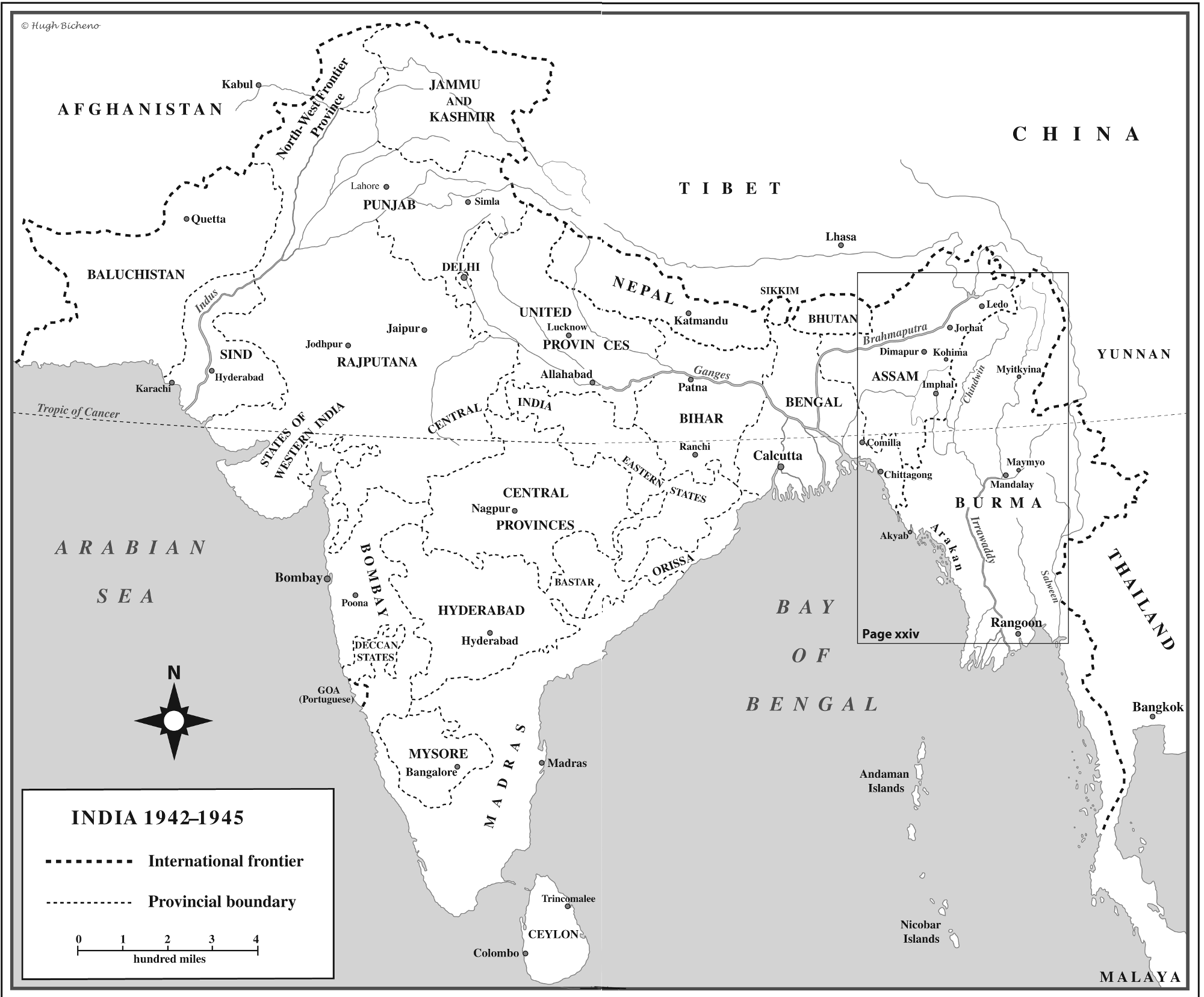
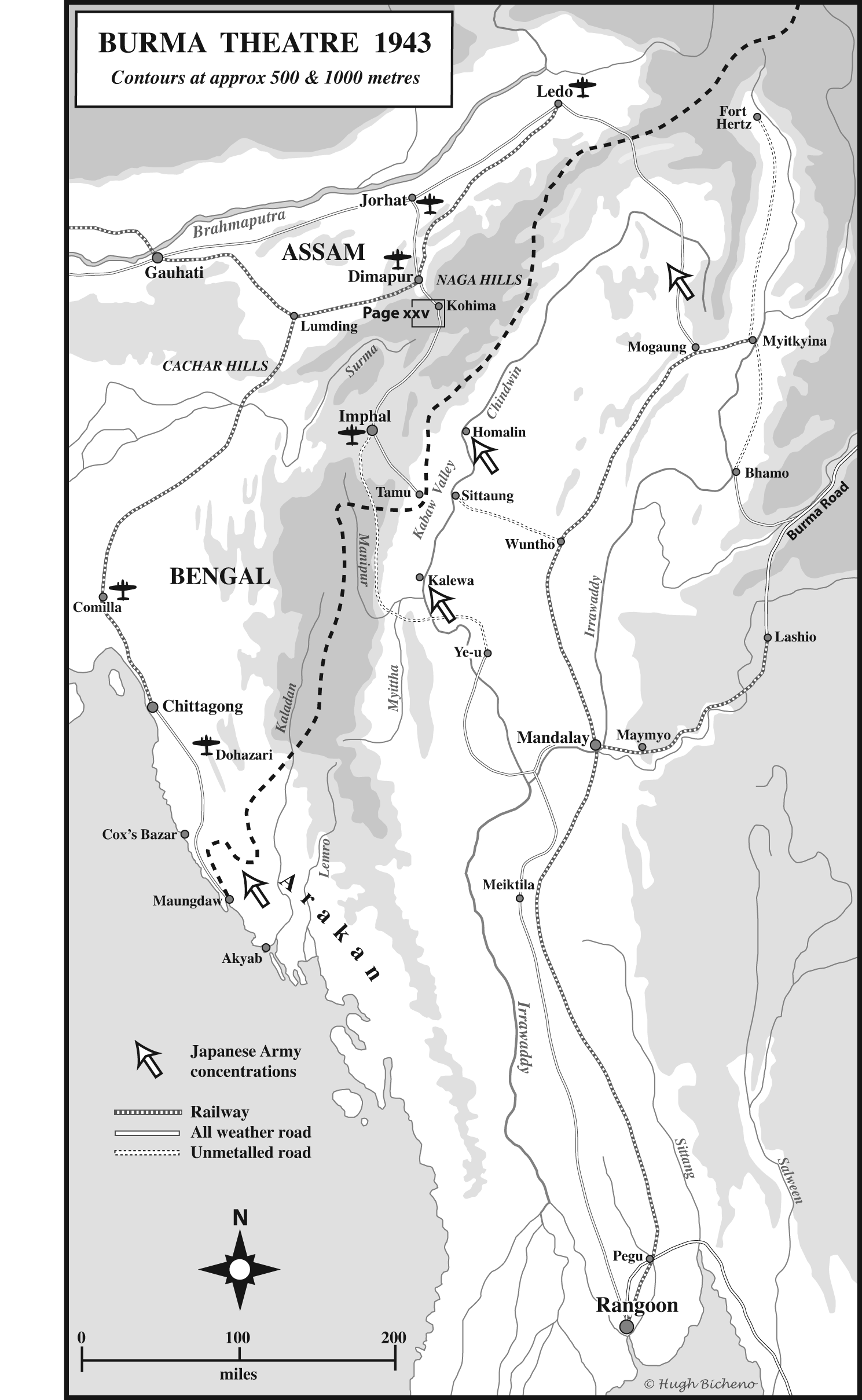
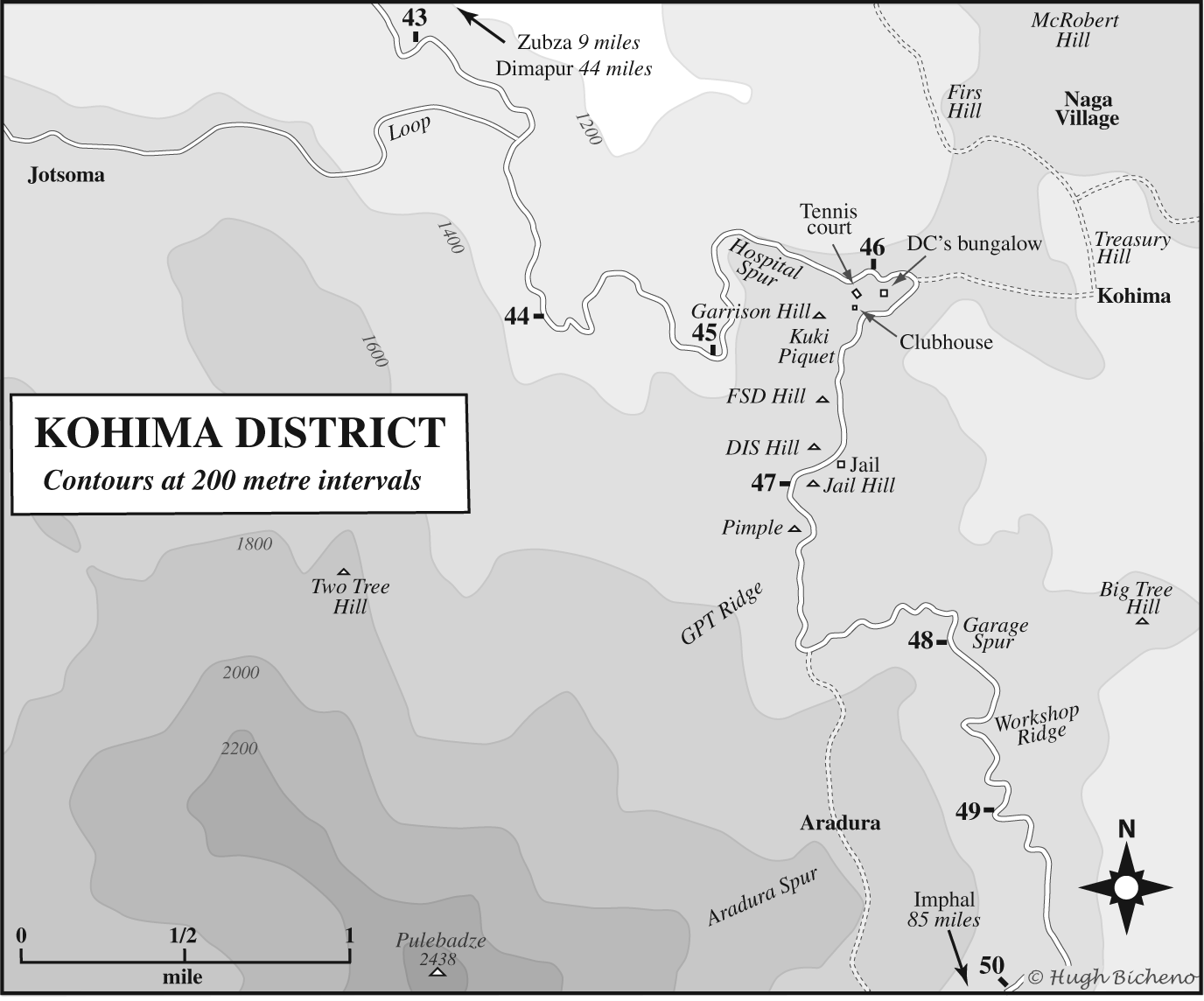
* Sato’s estimated strength of around 15,000 men in 31st Division was set against a garrison force of around 2,500. But of this number only 1,500 were fighting troops. (Japanese Monograph 134, p. 164. US Army Dept. of History.)
ONE
An Empire at Bay
Stepping inside from the breathless slump of the afternoon, Captain Thomas Pardoe found the grand lobby of the Strand Hotel a sanctuary of unimagined proportions. Gone, suddenly, the noise of the Burmese street, the call of the shoeshine boys and the rickshaw wallahs, and the air heavy with the smell of damp and river water. Rangoon in those days was a city aspiring to stature, made prosperous as the port through which Burma’s vast rice crop was exported, but still only a minor eminence on the fringes of the eastern empire. Visitors from India found Rangoon lush with gardens that ‘bloomed with tropical profusion – bougainvillea, poinsettas, laburnum and tall delphiniums of piercing blue. The Golden Mohur trees flamed like candles against the green foliage …’ They might stop to admire the great pagodas of Sule and Shwedagon whose golden domes rose above the city, or enjoy a night at an English-language theatre and dinner at the Strand, before moving on to Singapore and Malaya or westward to India. With its high ceilings, roomy corridors and floors of teak, the Strand was built for an age before air conditioning. Its founders, the four Sarkies brothers, were Armenians who had emigrated to the Far East from Persia and established a chain of luxury hotels which included the Strand’s more famous relation, Raffles Hotel in Singapore. The white-jacketed porters at the Strand would have taken Captain Pardoe’s bags without fuss while he signed his name in the guests’ register, a book that had in times past recorded the signatures of Somerset Maugham, Rudyard Kipling and the future king of England, Edward VIII, who had stopped there in 1922 while on a royal tour with his cousin, ‘Dickie’ Mountbatten. On that occasion a sumptuous barge, decorated with the Burmese symbol of royalty, four golden peacocks’ heads, and topped by three model pagodas, was provided for the prince. Oarsmen in long, flowing robes steered the royal barge while the future king relaxed in the pavilion, sheltered from prying eyes by shimmering white curtains which billowed gently as the boat moved across the royal lake near the centre of the city. Later on his journey the prince played polo at Mandalay, the former home of the Burmese kings, and ‘was entertained by dancing girls at a lavish reception’.
The city encountered by Captain Pardoe nearly twenty years later had grown outwards to accommodate the Indian migrant labourers working in the city’s docks and factories. Daily they unloaded tons of supplies destined for the Chinese Nationalist armies fighting the Japanese across the border far to the north. A correspondent for the Manchester Guardian reported on 2 February 1942 that 5,000 lorries carrying 30,000 tons were using the 712 mile route every day.* As Pardoe settled into his airy room at the Strand he must have relished the prospect of some time, no matter how brief, in Rangoon, an altogether different prospect from the central Chinese city of Chungking to which he was normally confined. That overcrowded, filthy city served as the temporary capital of Generalissimo Chiang Kai-shek’s Nationalist government. As a liaison officer to the Chinese military headquarters, Pardoe was obliged to live there among hundreds of thousands of refugees, soldiers and a vast assortment of carpetbaggers and chancers. The American newspaper correspondent Theodore White described the streets as ‘full of squealing pigs, bawling babies, yelling men and the singsong chant of coolies carrying loads from up the river’. The generalissimo’s court was riven by relentless intrigue, spurred by the insatiable ambition of Chiang’s relatives to enrich themselves and by regional warlords who pleaded and menaced for favour.
Pardoe arrived in Rangoon on 8 February 1941, but was given just a day to refresh himself before embarking on a mission to tour the country’s borders with Thailand and China. It was to be a journey by road, rail, boat and air, to investigate the local defences and to coordinate possible future action with the Chinese. Pardoe met up with a Chinese military delegation a week into his tour at the town of Kyukok on the border of the Chinese province of Yunnan. With an air suggesting a weary familiarity with the ways of his allies, he noted that while the visit was ‘supposed to have been strictly confidential, I am told its formation and proposed tour had already been announced over the TOKYO wireless’. Chiang’s court was riddled with informers.
At this time, February 1941, the Japanese had not yet occupied Thailand, although there were numerous reports of fifth-column activities. Pardoe recorded the activities of suspected spies and Japanese attempts to subvert the local population in Burma.
At Lilem, on the border with Thailand, he reported a rumour that eight hundred Japanese wearing Thai uniforms had been spotted just across the frontier; while a postmaster at Tachilek, who was being paid ten rupees a month to spy for the British, gave news that as many as 5,000 Japanese had arrived in Bangkok. The information seems to have been exaggerated, possibly by a spy anxious to please his paymasters. Further north, Pardoe worried over the role of Italian priests in the Shan states bordering China, whose influence ‘over some of their Asiatic converts is so strong, fifth column activities would be a possibility’. At Maungmagan on the Tenasserim coast he heard suspicions about a Mrs Leal, the Austrian wife of an Irish tin-mine owner. ‘She also owns a mine in the Thai frontier area. She set off to visit this mine in early April, taking with her a portable wireless set. Up till the war she was admittedly strongly pro-Nazi. I saw a copy of her dossier … She is being watched. Mr Ruddy [Burma Auxiliary Force], who has known her a long time, considers she is either extremely clever or else entirely innocent.’ Some official reader of this document in Rangoon has scribbled the words ‘A remarkable statement!’ next to this assessment of the curious Mrs Leal.




